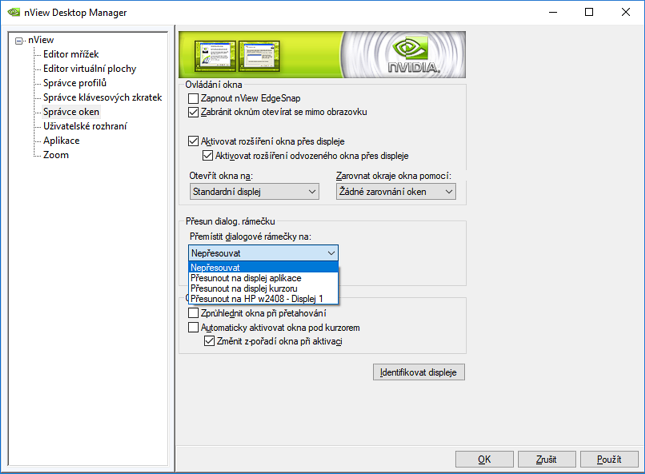

If Process32First(AHandle, AProcessEntry) then While Module32Next(AHandle, AModuleEntry) doĪHandle := CreateToolhelp32Snapshot(TH32CS_SNAPALL, 0) If SameStr(AModuleEntry.szModule, 'nview.dll') then If Module32First(AHandle, AModuleEntry) then
NVIDIA NVIEW CODE
The only "solution" that I found was to look for nView and advise the user to turn it off using the code below: function CheckForNview: Boolean įunction IsNviewModuleRunning(AHandle: THandle AProcessId: DWord): Boolean ĪModuleEntry.dwSize := SizeOf(AModuleEntry) ĪModuleEntry.th32ProcessID := AProcessId Looking at the stack trace from madExcept I could see that the application froze in nview.dll. The Delphi application stopped responding without any obvious reason. Unfortunately my laptop can't be updated to the latest version so I can't easily test with it. Has anyone else seen this issue? I've verified it with an older version of nView, but a customer with the latest version has the issue whenever he tries to move the main form or resize it. The application will move to the other monitor and any hidden forms will be visible. Choose to send the application to a different monitor. Show or ShowModal the form, then close it (form needs to have been shown at least once). Start any Delphi application with secondary forms that will be hidden when they are closed. Use a multi-monitor system with NVidia nView desktop manager. The problem can also be seen using just the IDE (show a non-docked window, close it and then choose to send the Delphi IDE to a different monitor.) The previously hidden forms are in an unresponsive state and can't be closed. Basically nView seems to 'unhide' hidden secondary forms when moving an application between monitors.
NVIDIA NVIEW WINDOWS
*(I'm trying to get nView working, because Windows Virtual Desktop doesn't yet allow for Desktop renaming, and because the right-click menus, and the taskbar UI of nView, is so much better than the Windows implementation.I've recently had a customer report an issue with my applications and NVidia nView desktop manager.
NVIDIA NVIEW HOW TO
Obviously, if someone knows why it's automatically disabling, and how to stop that, that would be even better. I'm hoping that this information can be useful in:ġ) somehow telling Windows to start this application when Windows startsĢ) writing some ?script? that can keep the process running, or re- Enable it if it automatically Disables.

I can't imagine that this is the way it is supposed to "work". Or any ideas how to keep it from disabling itself? But it partially defeats software's the purpose, if I have to keep telling it to start running again.ĭoes anybody have a workaround to have it re-start automatically? I do not notice any trigger action either.įortunately, it remembers my settings. The time it runs before disabling varies. This means I need to open the nView Desktop Manager again, then re Enable, for it to begin working again. It runs fine for a while, then automatically disables. I open the nView Desktop Mananger and Enable. For reference I have NVidia Quadro P3000 notebook card.
NVIDIA NVIEW WINDOWS 10
I'm running the latest version (149.77) of nView Desktop Manager on Windows 10 圆4.


 0 kommentar(er)
0 kommentar(er)
